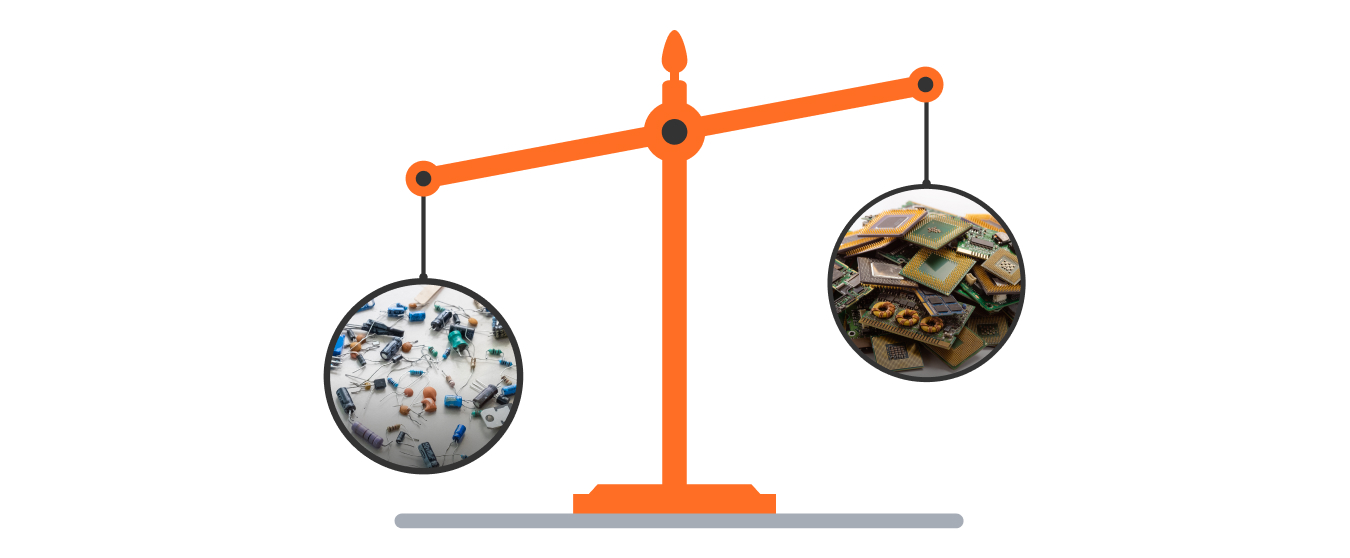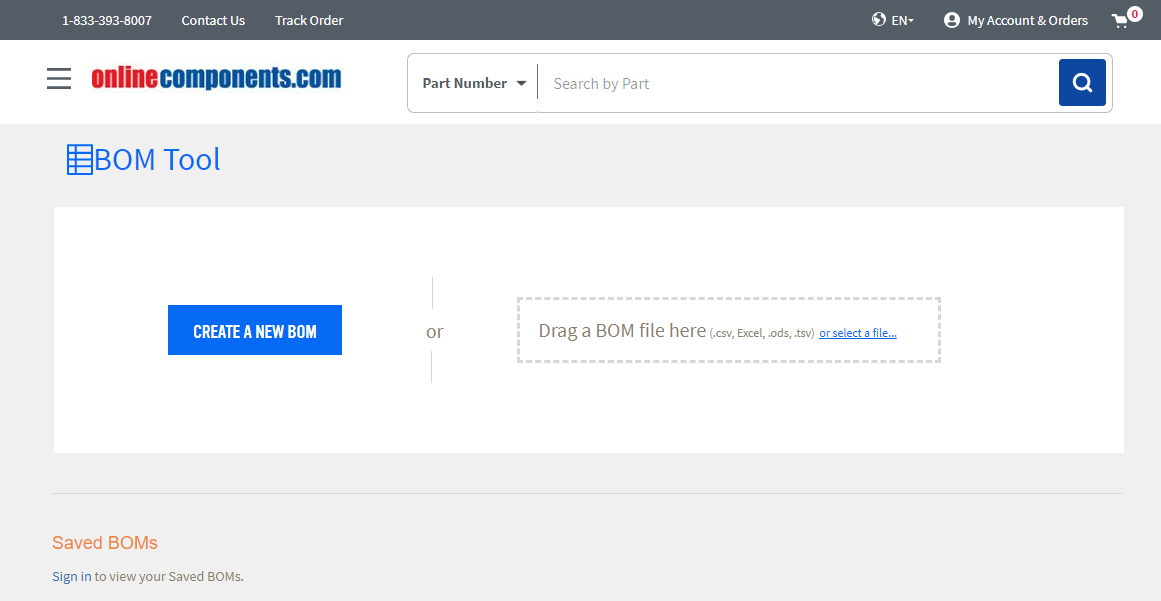Smart procurement of electronic components is equal parts art and science. The “art” part is when you develop and maintain the professional relationships with suppliers and distributors of the components you need. This takes time and finesse.
The “science” part is the recognition and use of best practices taken from procurement operations in many industries. Building this best practice knowledge entails the asking of many questions, and distilling just what you need out of the answers.
One of the most asked questions in component sourcing is “How much overage should I buy when ordering parts?” Overage is roughly defined as the extra parts you think you might require to complete a production run. Depending on your situation, this could run from tens to possibly hundreds of parts.
Some of the reasons for over-ordering components include: spoilage in production, bad or out-of-spec parts, required spare parts inventory, expected part shortages, end-of-life (EOL) notices, anticipated price increases, shipping disruptions, and others.
What We’ve Learned
Some of these challenging purchasing situations can happen at the same time. Case in point, the recent pandemic caused a lack of workers that slowed production lines leading to shortages. These shortages were worsened by delivery problems. The shortages led to over-ordering by purchasing departments, which added upward price pressures. The over-ordering also stretched out delivery times and led to inventory build-ups. And now those inventories are being dumped at a loss.
So, is overage buying a smart strategy, especially knowing that a shortage of purchased components is one of the biggest reasons that products are not delivered on schedule? And what guidelines should you use when calculating overages? Well, those questions are much easier to ask than to answer, and it depends heavily on your own manufacturing situation. So, let’s work our way through the various scenarios.
Prototypes
If you’re an engineer working on a prototype, your part demands should not be a problem. It may be wise to increase the quantity by one or two pieces in a particular order, especially if your board might be fried by static or burned up when you overload it in testing. But, in general, you should be able to find what you need, although you won’t be earning any bulk ordering discounts in the process. You can get the engineering perspective on limited prototype part sourcing through the content from our friends at CircuitBread, accessible at - As a Student of Electronics, Do I Need to Over-Buy Components?
Limited Test Run
When you get past the prototype stage and you ramp up to producing beta or sample quantities of your product, you begin experiencing increased component need. The general rule here is 5% overage, but there are two schools of thought. One is that smaller sized components usually require more overage, due to mishandling or other production mistakes. The other is that more expensive components usually require less overage because more care is taken to prevent loss. Either way, 5% is probably a good overage to keep in mind.

Small Batch Automation
If all you require is scheduled small production runs of boards in your own facility, produced by your in-house manufacturing staff, a fairly safe target is 5 – 10% overage, based on the same factors as with a limited test run batch. It’s best to allow for spoilage, production errors, shipping damage, etc., but small runs allow you to closely control your process quality and parts inventories. So, at this level, attention to the details can really pay off.
Contract Manufacturing
When you advance to this level of manufacturing, you are graduating to automated component placing or insertion via machine. Small passive components that will be machine-inserted are usually required on reels, and most manufacturers generally require complete reels whether you are sourcing the components or they are. Either way, overage requirements can usually run in the 10 - 20% range.
The exception once again can be the cost or size of the individual parts. Expensive components, like processors, may (and should) be handled and mounted with more attention to spoilage. Larger parts are also often mounted by hand, and are less subject to automatic insertion machine issues. The general rule for expensive components or larger ones is for 5% overage.
Tools That Can Help – Bill of Materials
Whatever your production needs are, it is always best to make use of a Bill of Materials (BOM). A BOM is a complete list of the components and materials needed for the assembly of a product, including part numbers, quantities, prices, and other specs that may be useful to you. You can create a BOM using OnLineComponents BOM Tool at https://www.onlinecomponents.com/en/bomquotes.
A well-planned and maintained BOM containing a complete parts and materials list allows for planned and timely purchases, cost and inventory control, overage estimation, and management of waste and production delays.

A well-planned and maintained BOM containing a complete parts and materials list allows for planned and timely purchases, cost and inventory control, overage estimation, and management of waste and production delays.
Additional tools that can be of great use in planning for component needs and overages include Enterprise Resource Planning (ERP) or Materials Requirements Planning (MRP) software packages.
ERP systems are broadly applied and help to manage many everyday business activities in real time across an entire enterprise. MRP systems are more narrowly focused on helping a manufacturer determine precisely the materials they require, when they need them, and what quantities they need. You may want to investigate both systems to see what might make the most sense for your individual manufacturing needs.
Summary - Managing Your Overage Purchases
Allowing for some amount of overage when purchasing electronic parts is a wise practice, but, as with most business practices, determining an optimum percentage to over-order will be guided by your own situation, along with current component availabilities and business realities.
Like most purchasing situations, it is best to follow these broad guidelines:
- Know exactly what you need
- Always use an updated BOM
- Keep track of outside parts availability
- Avoid single-sourcing of parts
- Maintain multiple supplier relationships
- Take advantage of the resources and abilities of a reliable and authorized component distributor
For more resources, check out Our friends at CircuitBread.
contact us:
 EN
EN
 English
English
 Chinese
Chinese
 Italiano
Italiano
 Portuguese
Portuguese
 Deutschland
Deutschland
 French
French
 Russian
Russian
 Japanese
Japanese
 Turkish
Turkish
 Korean
Korean
 Spanish
Spanish
 my account & orders
my account & orders


_450.png)
